Performance
As a camera for photography enthusiasts, it is not
surprising that the NEX-6 is generally pretty responsive. Capturing performance
is fairly good, although the startup time of the camera with the 16-50mm power
zoom is a bit long, and some of the apps are quite slow when operating.
Operational speed
With its 16-50mm power zoom kit lens mounted, the NEX-6
works more like a compact camera than a mirrorless ILC. After turning the power
switch on, it will first be necessary to extend the lens before you can start
capturing. It takes 1.9 seconds. If you use a basic or more normal zoom lens,
the camera will be ready to take pictures within 1.1 seconds
If there is any shutter lag on the NEX-6, this is certainly
not noticeable when used in reality. Delays when taking each shot is in the
range of 1.0 to 1.5 seconds (for JPEG and RAW + JPEG, respectively). Adding the
integrated Flash into the mix does not step up those times.
AF System and Performance
The NEX-6 features a 'fast hybrid AF' system that we first
saw in the NEX-5R. Following the approach of its competitors, Sony has adapted
its imaging sensor to obtain information on the phase difference so that the
camera can determine not only the direction to move the lens to get focus, but
also how far. This has a certain number of advantages compared to the method of
the contrast detection focus traditionally used by the compact and mirrorless
cameras, which require the lens to scan through the focus locations, while the
camera checks whether it is becoming more in or out of.
The ability to gather information about this depth not only
means that the focus can be done faster (because the camera’s lens can be
pushed straight to the exact location, rather than having to scan through the
entire range), but also yields advantages for continuous focus and for focusing
during the movie recording process, for example, since the camera has a clear
understanding of depth, it will reduce the risk of any camera suddenly missing
a moving object and scanning off to infinity and turning back to seek it out
(and ruining your movie by doing that).

The Autofocus
Hybrid system (Hybrid AF) of Sony on the NEX-6 uses an array of 99
phase-detection points that spread throughout the central part of the sensor.
It covers a higher, relatively broader region than the system used by Canon in
the EOS-M.
As with the system that Canon have performed on the EOS M,
the phase detection technique on the sensor is not used as an independent system
(it does not seem to have the accuracy that the sensors used in DSLRs have), so
it is used in combination with normal contrast detection). Thus, the phase
detection is used to control the lens close to the in-focus location, and then
the contrast detection is used to scan through the optimal focus point, to
adjust the focus.
We were not too impressed with the addition of Canon for
this feature on the EOS M (the overall focus performance is relatively slow),
but Sony has performed much better on the NEX-6. The camera focuses almost
immediately in the cases of high contrast, and takes less than a second in low
light or other difficult scenes.
Outdoors, the NEX-6 was able to monitor moving objects
surprisingly well - even when capturing at the speed of 10 frames/ second. We
captured at the speed of continuous shooting 10 pictures of an approaching bike
(with a very tangled background behind him), and the NEX had the ability to
monitor the objects about 70% of the time. We would expect a more accurate rate
from the actual phase-detection systems, but with a camera of this type, we
also felt impressed.

Frame 1

Frame 2
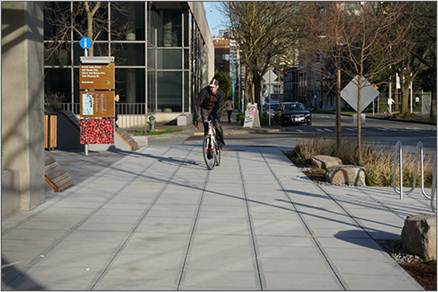
Frame 3
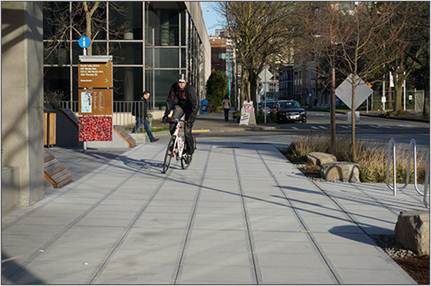
Frame 4
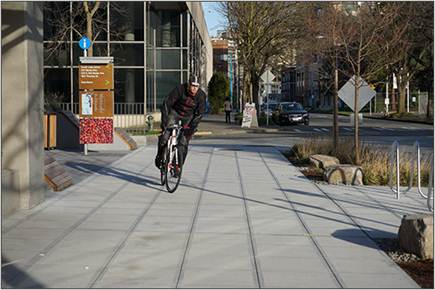
Frame 5
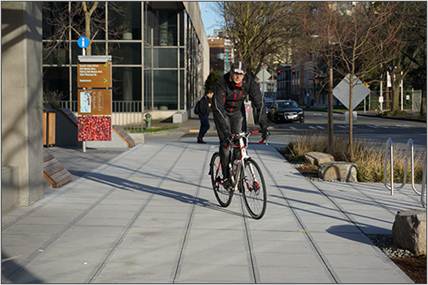
Frame 6

Frame 7
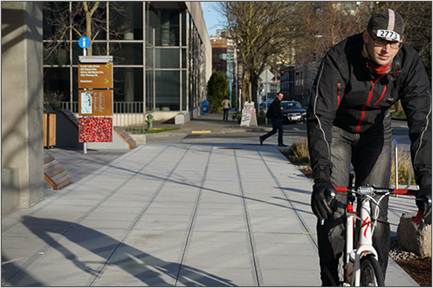
Frame 8
The object tracking feature works relatively well in the
movie mode, which is highly impressive, considering that the Hybrid AF is
available only in the still mode (a fact buried in a footnote in the manual).
The most difficult part is ensuring that your object is in the square at the
center of the frame, at which point you press the lower soft button to lock
onto them. In low light, the camera had to struggle much more in the detection
of objects. Trying to keep the fast moving kids in focus proved to be a
hopeless job. This is not extraordinary.
The NEX-6 is, of course, likely to focus manually, using a
'focus-by-wire' system like other mirrorless cameras. The frame is digitally
expanded, and you are able to move this region around by using the four-way
controller. Focusing is smooth and accurate with the kit lens, and the image on
the LCD and EVF is sharp enough to distinguish clearly what is in focus.
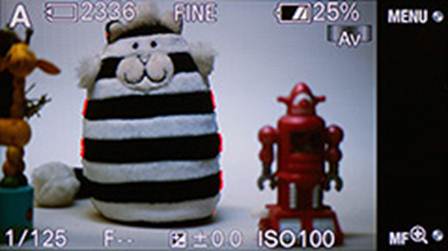
The NEX-6’s
maximum focus function allows you to focus manually with a high level of
accuracy. Here, the red border points out that the focus plane surrounds the
horizontally striped cat.
Another feature is related to manual focus found on the
NEX-6 (and plenty of machines of the same type) is the maximum focus point.
This draws a border around the areas in the frame that are in focus. You can
adjust both how strong the maximum point, and the color of the border.
Continuous shooting
The NEX-6 gives two different continuous shooting modes:
standard (3fps) and speed priority (10fps). As its name implies, shooting speed
priority mode is faster than normal continuous mode, but in a much shorter
time.
Thanks to the NEX’s hybrid AF system, the camera will try to
keep your object in focus, even when capturing in speed priority mode. However,
if your object wanders out of the phase-detection area, you will lose that
benefit, and the NEX-6 returns the contrast-detection status.
As mentioned above, in our experiment, the NEX-6 was able to
monitor a moving object while shooting continuously with impressive-but not
100% - consistency.
Continuous shooting quality setting
·
RAW + JPEG: 10 shots @ 3.0 fps
·
RAW: 12 shots @ 3.4 fps
·
Fine JPEG: 40 shots @ 3.3 fps
Priority speed quality setting
·
RAW + JPEG: 9 shots @ 10.1 fps
·
RAW: 10 shots @ 10.3 fps
·
Fine JPEG: 12 shots @ 10.1 fps
Experiment using a SanDisk Class 10 UHS-I SDHC card
The NEX-6 works as advertised, with competitive shooting
rates and buffer capacities. When the buffer is filled up, the camera does not
stop capturing - it just respectably slows down. In the normal continuous
shooting mode, you are able to have a direct look at your object; therefore,
you will probably pan with the moving objects fairly easily. In the faster
Speed Priority mode, you'll see a replay of the previous images, so the precise
panning is extremely difficult. Occasionally slower speed is better, even when
capturing moving objects
Battery life
The NEX-6 is provided power by Sony’s NP-FW50 Info Lithium
battery, which is used by plenty of the other Alpha and NEX models. The NP-FW50
has 7.7Wh of energy, promising 360 images per charge using the CIPA standard,
which makes it leading among the mirrorless ILCs. In real world usage we
noticed that the battery easily lasted through a day of shooting, but that is
not using Wi-fi. Once that function is turned on, the battery is worn out much
faster. Fortunately, the camera only switches on Wi-fi when needed, which helps
minimize the damage
The NEX-6’s battery is charged internally, using an
AC-to-USB adapter. Charging battery lasts 280 minutes. To charge the battery
faster - and the ability to always have a spare battery at hand - should
consider buying the BC-VW1 external charger ($60), which helps fill up the
NP-FW50 battery in 90 minutes.